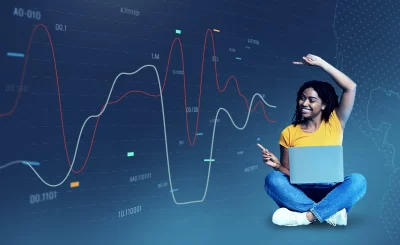The foreign exchange is a global over-the-counter or decentralized marketplace for the buying and trading of currencies. This exchange takes the world market into the financial realm. It involves all facets of buying, selling and trading currencies in determined or current prices. This is the largest financial market in the world with daily turnovers exceeding $1 trillion. Its growth is largely dependent on the state of the US economy.
Forex is traded on all major exchanges including NYSE, NASDAQ, and AMEX. Among these, the NYSE trades the most with a daily turnover topping $5.2 trillion. This makes it one of the biggest financial markets in the world. It is closely followed by the London Stock Exchange, which trades twice the amount of its American Counterpart, while foreign exchanges in Asia such as the Tokyo Stock Exchange, Hong Kong’s Securities Exchange and Singapore’s Clearing and Market Corporation take up the second position.
Forex has many sub-markets and exchanges, each having its own characteristic. These are the Forex markets, the GFL or the Foreign Currency Fluctuations Index, the GML or the Global Market Mapping System, the FX or the Foreign Exchange, the SEBI or the Securities and Exchange Board and the IVA or the Individual Volatility Index. There are also inter-market exchanges. These are the AMEX, the CFTC, the ACM, the OTCBB and the Pink Sheet.
The forex markets have several elements like margins, which are utilized to determine the amount of profit that one can make from trading currencies. When a trader wishes to make a trade, he will have to pay for an interest rate between one to four percent depending on the currency whose value he wishes to trade. This margin is referred to as his currency risk allowance or his hedge. In the foreign exchange business a trader will be able to gain a higher income if the currency’s value is predicted to go up compared with the amount of money he is willing to pay as interest. By exchanging the foreign currency of one country with the currency of the other country, a trader will be able to gain the advantage of having the value of the one currency to rise while the amount of the interest he paid will still allow him to make a profit.
Forex trading is also linked to other markets like stocks, bonds and commodities. In forex trading, when a buyer is speculating on the future exchange rates of a certain currency, he will be dealing with different currencies. He will be buying them at lower prices and then selling them at higher rates when the market price goes up. The same applies to the Forex futures market. By buying a contract in the futures market, the trader will be buying the right to purchase or sell a specific quantity of a commodity at a definite date in the future.
The Forex market and the Foreign exchange trading are both a liquid and a gaseous market. For instance, the Forex pair, which represents the most traded currency pairs in the foreign exchange trading system, has a very liquid nature, i.e. it can be bought and sold quickly without any time constraints. On the other hand, the Forex futures which represent the contracts that are traded on the specific date and cannot be sold until that certain date, becomes a liquid market because at this time there are no restrictions on the supply and demand of the second currency.










